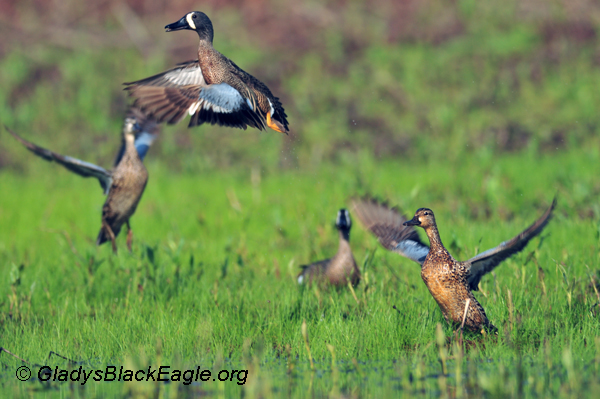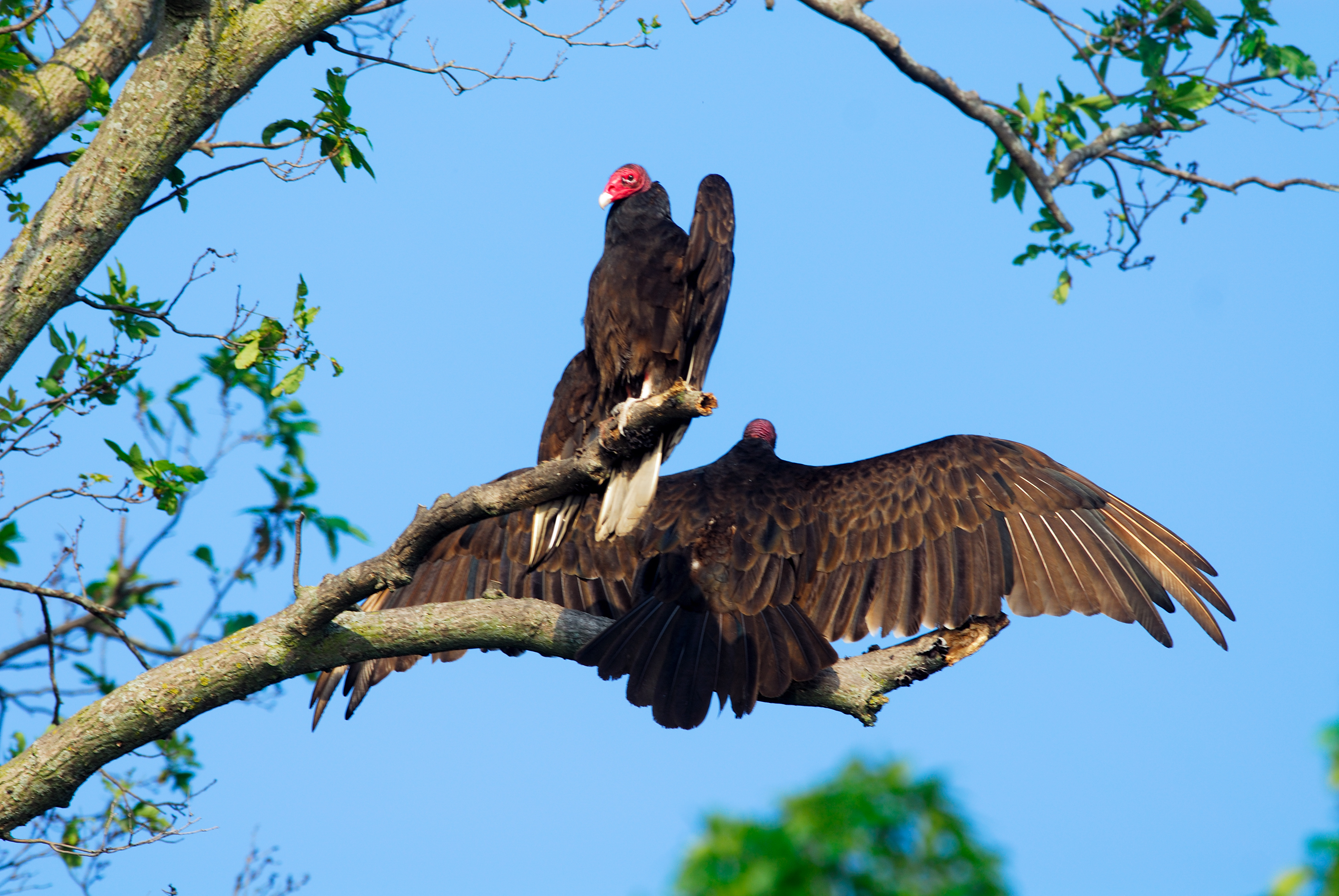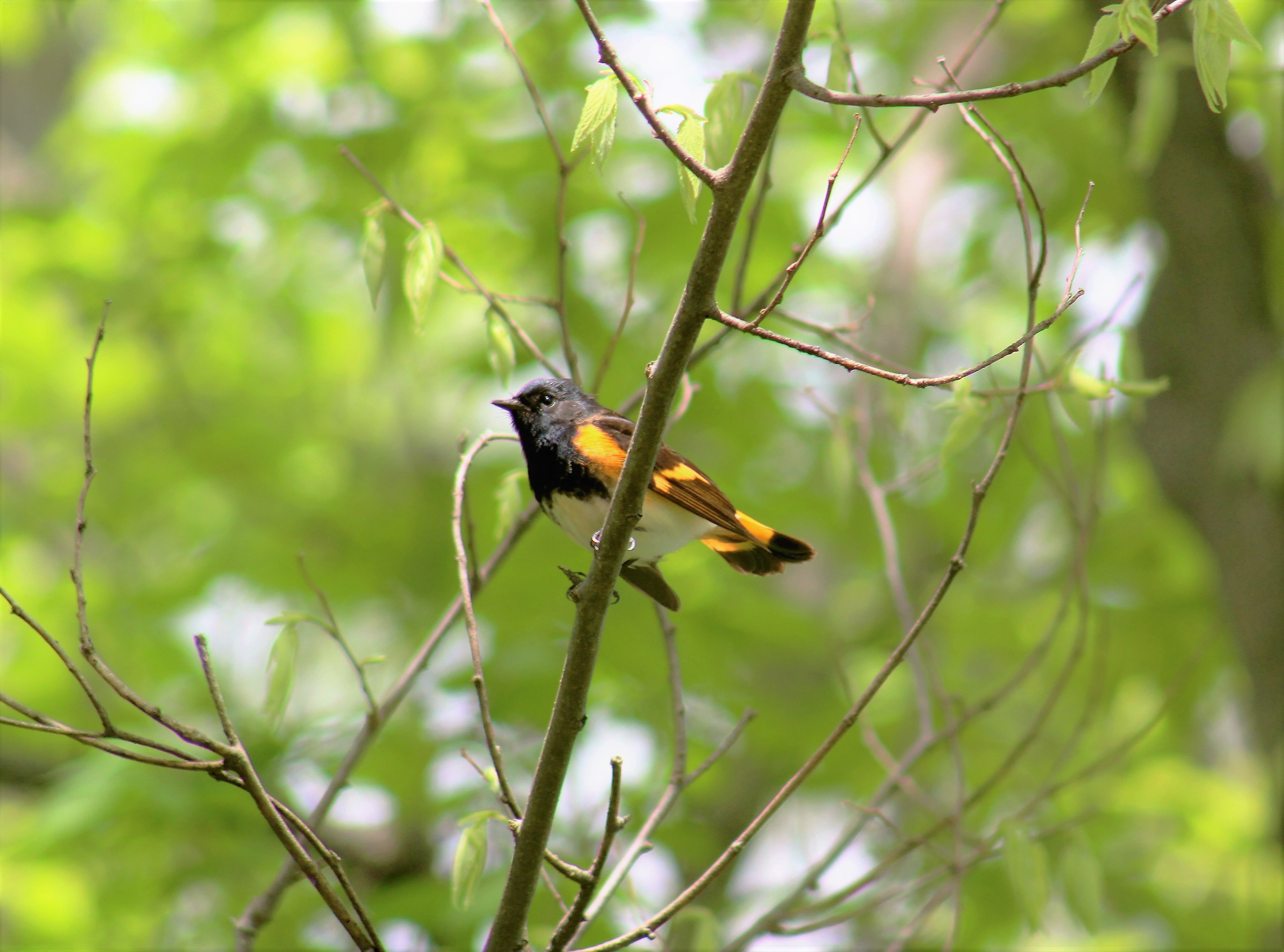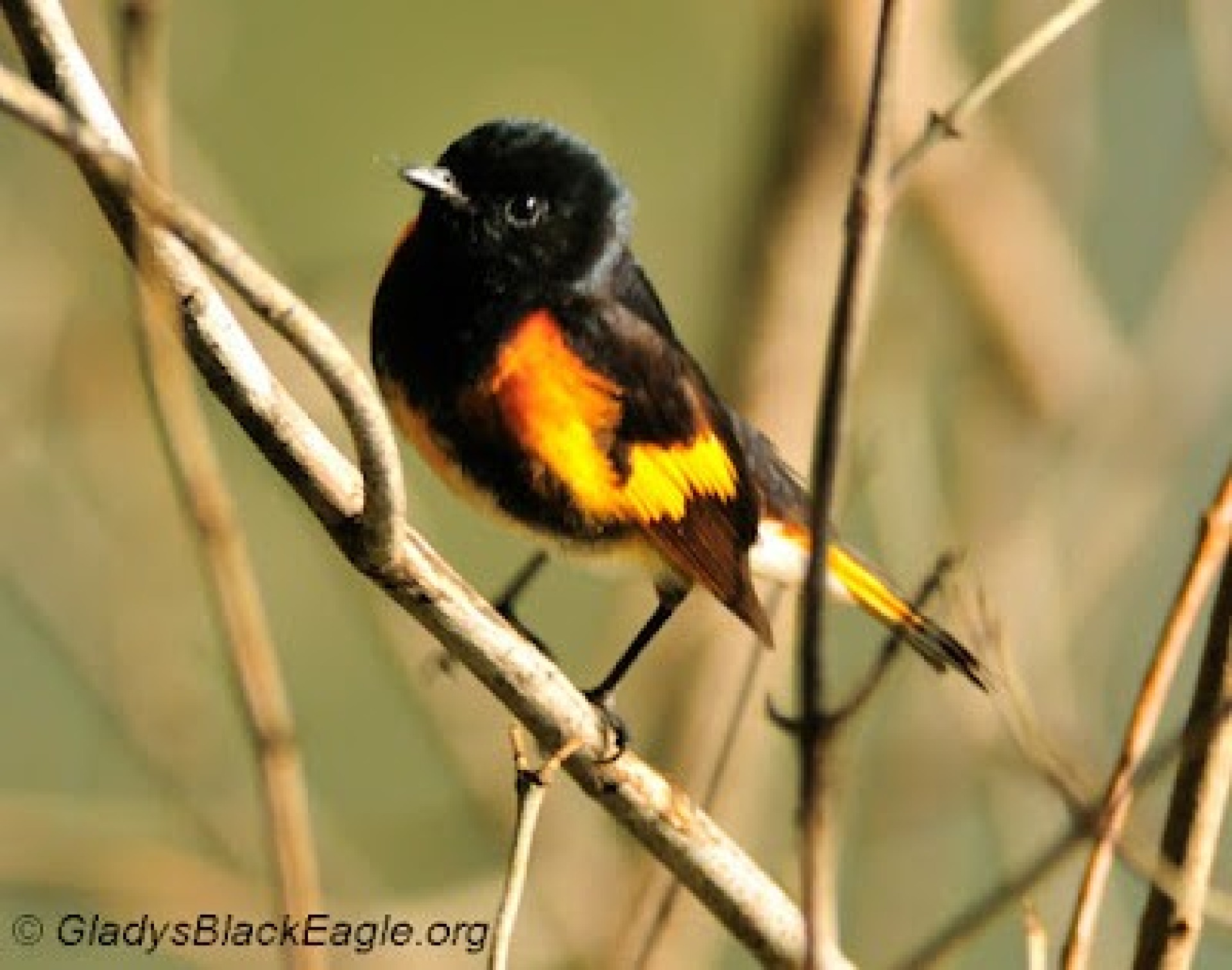Migration "Madness"
Marla Mertz, Marion County Conservation, and Linette Bernard, Feathers & Ink
How quickly the seasons change - from drought to ice storms, cold temperatures and unexpected snow, to the faint and distant sound of spring. When spring sounds appear, people tend to shift their moods and perspective from the grey days of February to the coming newness of spring.
- Listen to podcasts on birdnote.org (the bird note of the day is in the upper right) - Listen to this show, Birds return with the light as it explains a trigger to migration.
Migration has filled people with a sense of wonder and amazement for thousands of years. It’s the time of year to move from one place to another and the time of year when hundreds of species of birds will return or continue to pass through on their journey north. Remember the saying, “early bird gets the worm?” It’s more like the “early bird gets the best nesting territory.”
- Visit the Learn More page to find links for info on bird migration!
- Find answers to Frequently Asked Questions about migration.
Migration Terms
The vast majority of all birds exhibit some kind of movement over the course of a year. Even birds we consider permanent residents need to be capable of moving due to weather and/or can adapt their food from insect to seed.
Most Iowa nesting birds are considered migratory and live a good portion of their life “on the wing.” Hundreds of species we adore are really birds of two worlds. We’ll break down the types of migration:
- Neotropical migrants are birds that breed in North America, but spend the winter season south of the border in Mexico, Central America, South America, and the Caribbean. Some older folk may still call them “jungle birds.” A few examples would be blue-winged teal, oriole, tanagers, bobolink, grosbeaks, hummingbirds, and Swainson’s hawk.
- Short-distance migrants are birds that winter south of their breeding grounds, but stay mainly within the United States and Mexico. Wrens, killdeer, red-tailed hawks, bald eagles, and white pelicans are examples.
- Partial Migration is considered by some to be linked more to a “genetic code.” Some birds of the same specie will migrate while others will stay in the same area. Iowa examples include robins, bluebirds, goldfinches, chickadees, etc. Some will migrate, while others tend to stay and bear our winters deeper into wooded protection. Iowa holds many flocks of robins all winter long, but come spring, large flocks of returning robins appear in our yards again returning from somewhere south.
- Irruptions are usually a result of a food driven journey. Food sources of some birds can vary dramatically, season to season, year to year. Some would call this a “flexible” migration strategy. An example would be the snowy and saw-whet owls and other boreal birds that follow their significant food source. 2012 was considered an irruption year with the dramatic migration of young snowy owls moving into Iowa and even Missouri. Our environment here does not compare to their homeland in the tundra and many of those birds seem to face huge mortality.
Every bird species is unique in their return. Many species mate for life unless something happens to one and then it could take a year or two to locate another. Some species are unable to successfully breed until they are 3 years of age or more, so many flocks of birds that we consider non-breeders or “juveniles” appear in large number at a later date.
- Check out this Neotropical Migratory Bird Species List (PDF) for a list of birds that breed in North America, but spend nonbreeding time primarily south of the US - these are the neotropical migratory birds. The other list includes birds that breed and winter in North America, but not all of the these will migrate south of the US.
Resources for learning about birds
- Download a detailed look at arrivals and departures from Iowa Ornithologists' Union.
- Ideas for educators (remember, parents are educators, too!) Free resources including learning about field guides and how to teach young people how to use binoculars.
As you and your friends and family start to see our summer nesters and birds stopping by on their return journey north... remember that you don't need to focus on identifying every bird that you see - start by simply describing the bird - what color is the body, head, wings; describe the shape of the beak; talk about how that bird moves about and where you saw the bird. Sketch the birds you see or take digital photos.
The adult water-loving birds seem to arrive first. Sounds can be heard from the sky to announce the first waters opening up these birds’ feeding ground. The males all have their own unique colors, some with fancy feathers, and all have a call to attract a female. The earth tone colors of the females let them blend with their environment to avoid predators and raise their family.

Click to see Water Loving Birds album in Google Photos!
Migrating raptors also arrive early. They meet up with their mate at their previous year’s territory in hopes that it doesn't get stolen by another. Younger raptors not old enough for a successful breeding year worked on their return territory the past fall and located their potential mate.

Click to see a Google Photos album of Migratory Raptors!
Songbirds, warblers, hummingbirds and many others continue their journey into the month of May. It is important to provide water and continue feeding songbirds. Many folks feed birds all year long, varying what they feed based on what species are in the area.

Click to see a Google Photos album of Migratory Songbirds!
Seasonal Movements
In Iowa, as many bird species head south in the fall, we welcome incoming visitors from the north. Iowa is a great place for many birds to spend the winter including red-tailed hawks, bald eagles, dark-eyed juncos, and many others. Iowa has their own populations of hawks and eagles, but the numbers increase exponentially when northern birds spend the winter with us. The larger numbers becomes so obvious that many pay attention to these shifts and also notice when the numbers begin to decline. When the slightest seasonal change is noticed, those birds are on their journey north, heading home.
It's difficult being a bird!
Mortality rates are high during migrations, but bird mortality rates, in general, are high. Birds face daily survival challenges from habitat loss, predators, weather, crashing into windows, power lines, wind turbines, and cars… More than 50% of first year birds face mortality.
How do birds impact our lives?
People have been painting birds since the time of cave drawings; they have been raising and eating birds; and folks continue to write and sing about birds. It's time to spread our wings... okay our brains and learn a bit more about birds!
As a family or on your own, pick one of the topics listed below and make a scrapbook of related photographs and articles from magazines and newspapers, draw your own pictures, or take and print digital photos to tell about the topic.
Birds in our lives:
- Food and Feathers - chickens, turkeys, ducks and geese, eggs, quill pens, feather pillows, quilts and beds, down vests, jackets and blankets
- Recreation - falconry, birding (bird-watching), bird feeding, pets, hunting, pigeon-racing, photography
- Literature - poetry, fairy tales, myths (phoenix, Thunderbird), cartoon birds
- Symbols - national and state symbols, common sayings, birds symbolizing ideas (dove, hawk, owl), birds used in advertising
- Arts - painting, sculpture, carving (totem poles and duck decoys), songs, dance (ballet), stamps, and coins.
Now, describe the ways birds have affected people's lives.
Ready to put up bird feeders and bird houses in your yard?
- Cornell Lab of Ornithology Project FeederWatch learn about bird feeding
- Cornell Lab of Ornithology Project FeederWatch bird feeding resources
You can be a scientist, too! Check out these 'citizen science' projects:
- NestWatch - Help measure nature's success
- Citizen science projects are happening through Hummingbird: Operation Ruby Throat and the Hilton Pond Center for Piedmont Natural History.
Need help identifying ducks? Don't worry... many do!
published Tuesday, March 1, 2022



